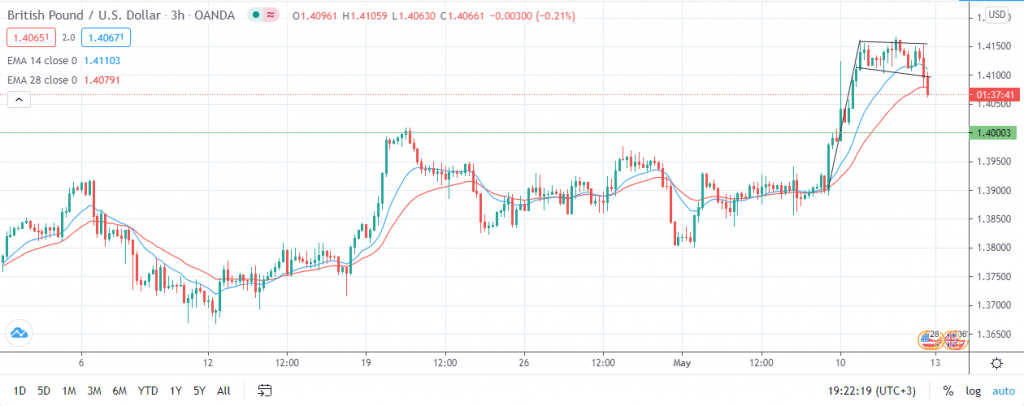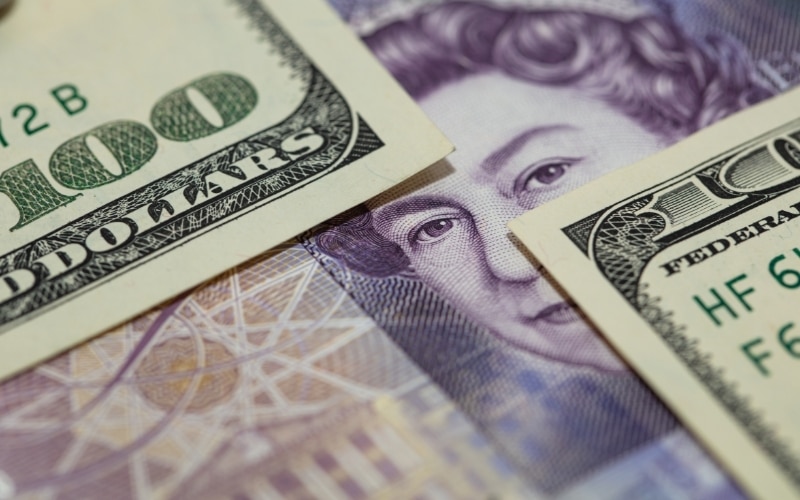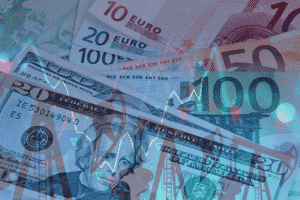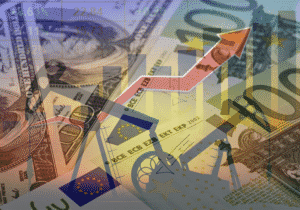GBP/USD is trading lower on Wednesday as a reaction to the US inflation data. According to the US Bureau of Labor Statistics, consumer prices rose by 0.8% on April MoM. The increase rate is the highest since 2009. The numbers have heightened the ongoing inflation concerns. With the soaring commodity prices, strong economic data, and plunging stock market, investors see inflation as more of a major problem than the Fed is willing to admit.
Besides, the new developments in the Scottish independence referendum have gotten investors to calm down after the SNP failed to get an absolute majority. Some analysts argue that the need to join hands with the Greens means the pro-independence camp has a weak foundation. For the remainder of the week, the focus will be on US retail sales.
Inflation rate figures
One of the factors that have influenced GBP/USD this week is the US inflation data. Investors and analysts alike have been eyeing the figures amid the ongoing inflation concerns.
On Wednesday afternoon, the US Bureau of Labor Statistics indicated that consumer prices had risen by 0.8% in April on a month-on-month basis. This is in comparison to the estimated 0.2% and the prior 0.6%. Notably, this is the highest inflation increase since 2009. With the exclusion of food and energy, the core CPI is at 0.9 compared to the forecasted and previous month’s 0.3%.
The inflation data has added to the ongoing inflationary pressures. The Federal Reserve has maintained that the expected inflation will be transitory and that it does not warrant tightening the monetary policy. However, based on the reaction of the markets, investors seem not to be convinced by that narrative.
Commodities like lumber, iron ore, copper, corn, and soybeans are soaring. The trillions of dollars being pumped into the economy in the form of government stimulus packages have also contributed to inflation concerns.
Subsequently, the safe-haven demand of the US dollar has risen as the stock market plunges. Dow Jones is down by 0.57% at 34,073.6 points after dropping from Monday’s 35,101 points. Similarly, Nasdaq 100 fell from 13,765.8 on Monday to the current 13,143.1.
With regards to US inflation data, GBP/USD will also be reacting to the US retail sales in the ensuing sessions. Analysts expect a reading of 1.0% compared to March’s 9.7%. The decline is founded on the diminishing impact of the $1.9 trillion stimulus package.
Scottish elections
The Scottish elections have also shaped this week’s GBP/USD price movements. In September 2014, Scottish citizens participated in an independence referendum. However, those who voted to remain within the United Kingdom won by 55.3% against their opponents’ 44.7%.
During the Brexit vote in 2016, 62% of Scottish voters were in the ‘remain’ camp. While the ‘leave’ side won, Scotland is still keen on leaving the UK. Regarding the new independence referendum, the Scottish National Party (SNP) lacked one seat to gain an absolute majority in parliament. After forming a coalition with the Greens, the pro-independence camp won the parliamentary elections on Saturday for the fourth time. Although this is one step closer to Scotland gaining its independence from the UK, it has led to a calmer market.
According to some analysts, the fact that the SNP initially lacked an absolute majority indicates that the push for the referendum is rather weak. Analysts at Citigroup have stated that the possibility of Scotland leaving the UK within the next ten years is at 35%. Notably, the relatively low probability has offered support to the pound sterling.
GBP/USD technical outlook
On Wednesday, GBP/USD dropped from an intraday high of 1.4154 to 1.4079 as a reaction to the US CPI data. The currency pair began the week by extending its Friday gains. The surge was a reaction to the big miss by the US non-farm payroll numbers. However, the pair eased as investors shifted their focus to today’s inflation data.
On a 3-hour chart, GBP/USD is trading between the 14 and 28-day exponential moving averages. Besides, it has moved past the lower border of the bullish flag.

Over the next two sessions, I expect the pair to drop further at the psychological 1.4000. If the bears manage to push the price past that support level, the next target may be at 1.3900. On the flip side, it may find support at 1.4050 and rebound to 1.4150.



